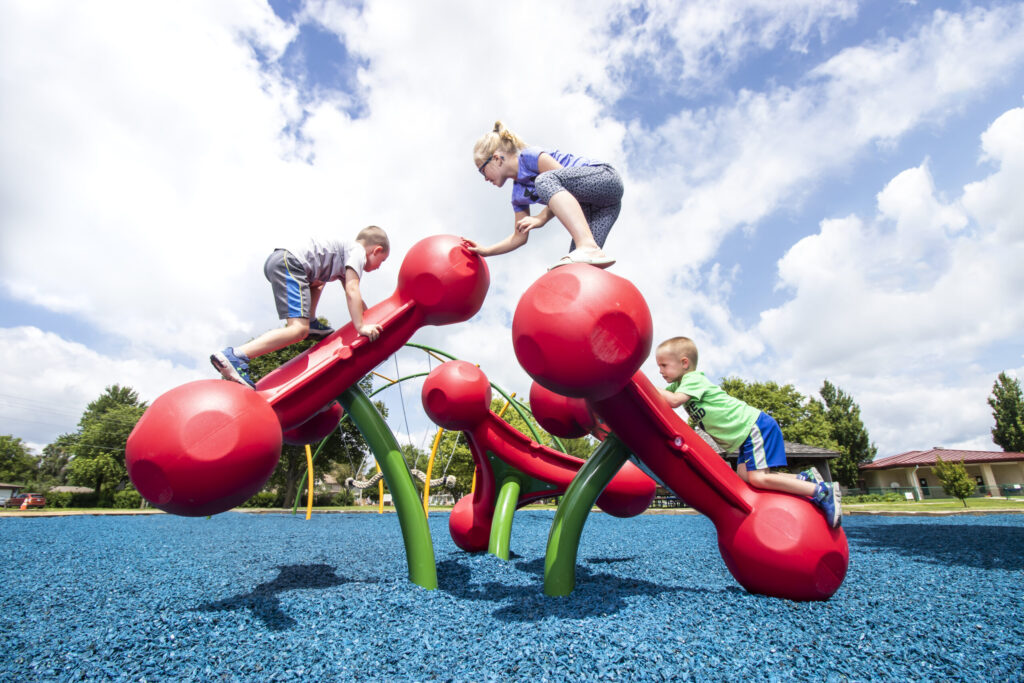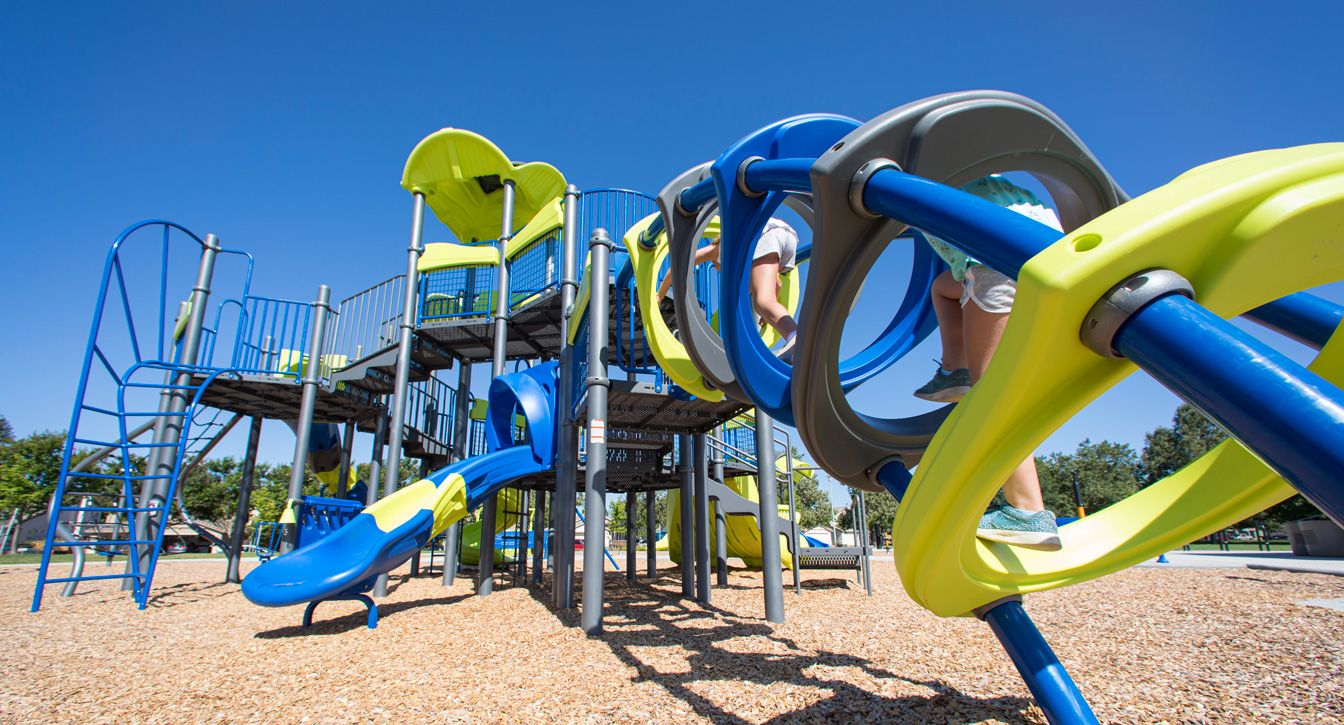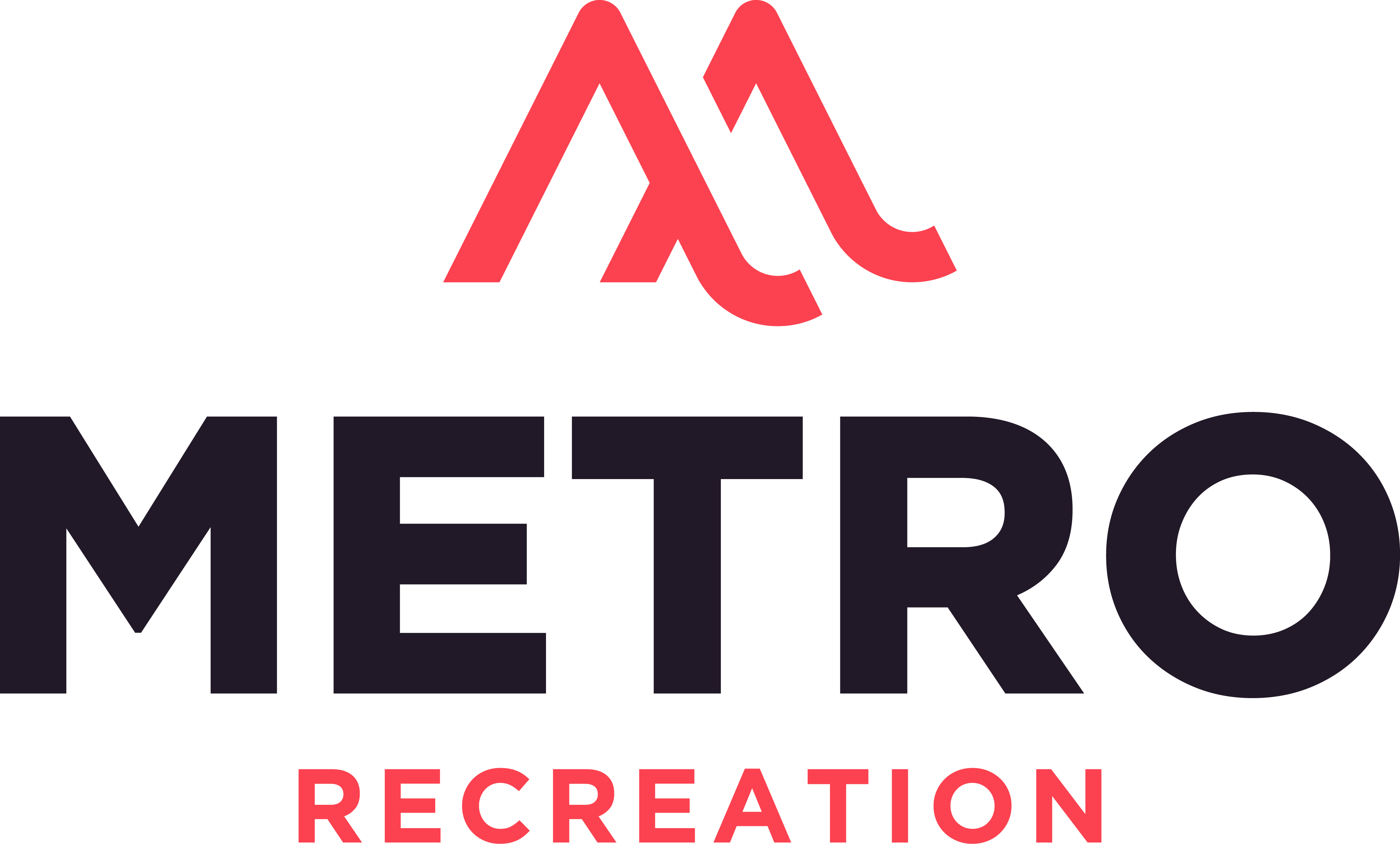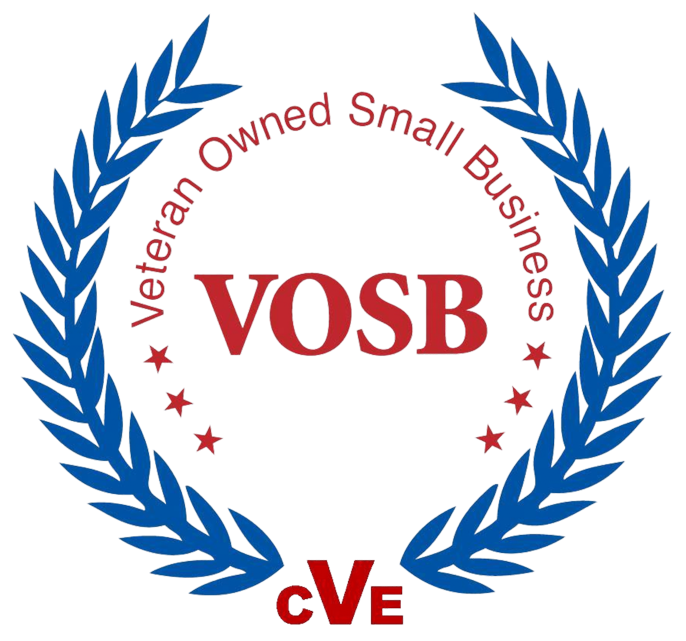

Have you ever walked past a local playground and noticed the swings creak, and the slides are worn out and rusty? You remember when this playground was the perfect after-school spot, but now it’s empty and forgotten. You want to see this play area thriving again but don’t know how to go about it.
Can you imagine parents working together to build a new spot where their kids can hang out, make friends, and create memories? Picture the city deciding that it’s time for a new playground design. Everyone’s excited for the chance to have a modern, safe, and clean park where children of all abilities can have fun playing together.
Metro Recreation understands that when you’re creating a space for imagination and adventure you need to involve the community and see what they really want. Our playgrounds buzz with laughter. Kids have a blast there because we build playgrounds with swings, slides, climbing frames, and see-saws specifically designed with the community’s desires in mind. After all, they’re the people who will be visiting them. Now, let’s take a minute and think of a few ways we can make sure we’re effectively involving community members in playground installation projects.
1: Assess the Community’s Needs
Before picking out all of the pieces of equipment, take the community’s needs and wishes into account. You can use a variety of strategies from surveys, to town hall meetings, and interviews to collect feedback. You may find playground suggestions that completely run the gamut—from wanting all-inclusive equipment to needing a meeting room for groups to gather together and where parents can have their child’s birthday party. You’ll probably also see suggestions such as:
- Play areas that are inspired by nature. These use natural elements like rocks, logs, and plants to give children a space to play and explore nature
- Sensory gardens with a variety of plants, textures, and scents. These can help keep children calm and relaxed. They’ve been found to be therapeutic for children with sensory sensitivities
- Bicycle paths or tracks give kids a safe spot to ride their bikes without having to worry about oncoming cars, and they help them develop gross motor skills
- An arts and crafts station where kids can develop creativity through play.
While many of these may be a fantastic addition, some of them are simply not practical. They might be too expensive, require too much upkeep, or be too big for the space. However, you can still listen to the request and see if there’s any way to incorporate any elements of the idea. For example, if somebody suggests installing an Olympic-sized swimming pool, that’s simply not feasible. However, a water area with sprinklers, splash pads, and water tables might be a great alternative. By including everyone and listening to what they say, you’ll be able to build a playground specifically for them.
2: Foster Open Communication
Communication is the key to working together. It’s much easier to build a successful community playground if, from the very beginning, there’s open and transparent communication. The first step can be organizing meetings or workshops for local residents to feel free to openly talk about what they would like the playground design to include. There are many other methods to gather community input too. For example, online surveys or feedback forms are a convenient way for community members to share their thoughts, and these are especially beneficial for people who are unable to attend in-person meetings.
In the decision-making process, you want to make sure all voices can be heard. If you give several ways for community members to get involved early on, it will be easier to gather the important information and insight you need. Including input from the people visiting the playground and using its equipment will make it easier to build an inclusive and engaging playground that fits the community’s needs well.
3: Collaborate with Local Organizations
Communication may be more effective if you seek out organizations. That way you save time by reaching a large number of people at one time. Joining forces with nonprofit organizations, local businesses, and community groups also gives you access to their resources, and information For example:
- Local Parks and Recreation departments can let you know all about the area’s regulations and any required playground safety standards that need to be followed.
- Leaders from local organizations like the Boys & Girls Clubs, scouting troops, or Little League teams can recommend the types of activities and equipment that kids would like.
- If you connect with representatives from environmental organizations they can help you design a playground that’s both eco-friendly and promotes the best sustainability practices.
- Local businesses may even be willing to donate funding for sponsorships or other means of support for playground projects. Depending on their type of business, they may also offer expert advice in various areas including landscaping, construction, or marketing.
These types of relationships can help you reach more people who can give you valuable support and help broaden your network. If you work with us, we can create playgrounds the entire community is bound to love!
4: Community Engagement Strategies
Hosting community events encourages members to be involved with and enthusiastic about a new playground installation. Design workshops, fundraising activities, and volunteer days help these community engagement strategies welcome local residents to the project. By involving them in the process, you can develop community pride and build a playground for everyone to enjoy. As Kevin Costner once said, “If you build it, they will come.”
5: Involve Children in Playground Designs
Kids are the ones who use playgrounds, so it’s a good idea to give them a say in the way they look and feel. Ask for their ideas using contests, surveys, and talking groups so the playground will be perfect for them. When creating today’s playgrounds, “Children have increasingly taken center stage in the creative process—drawing pictures of structures they want to climb on, making models out of clay, building forms with Legos” (Gibson, 2023). It seems only fitting to have kids contribute to the design process. After all, who knows better about playgrounds than the kids who play on them?
Community-Centered Commercial Playground Installations
Involving the community is key to having an amazing modern commercial playground installation process. Taking stock of their needs, keeping communication open, teaming up with local groups, hosting events for everyone, and letting kids have a say make it possible to build playgrounds that are special places for everyone to enjoy. Metro Recreation brings families and communities together by encouraging fun and safe play. Contact us for more information, and let’s make a playground everyone enjoys!
Sources
Gibson, C. (2023, June 30). The future is a playground: Designers and children are reinventing play spaces for a changing world. The Washington Post. https://www.washingtonpost.com/lifestyle/2023/06/30/future-of-the-playground/







